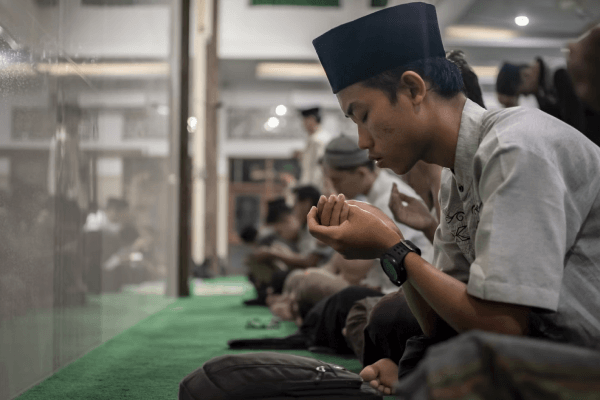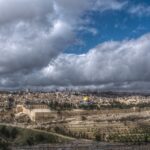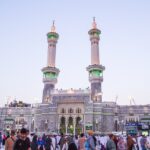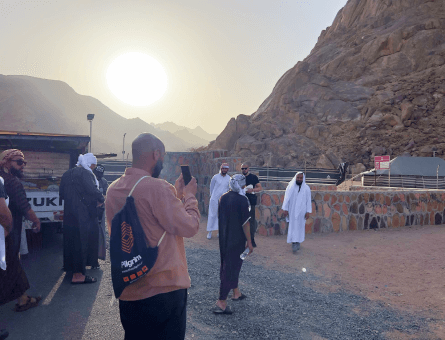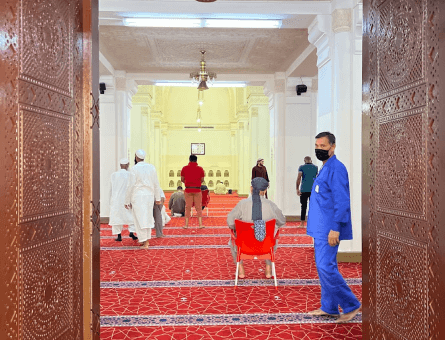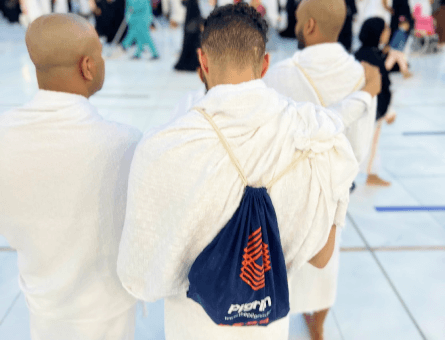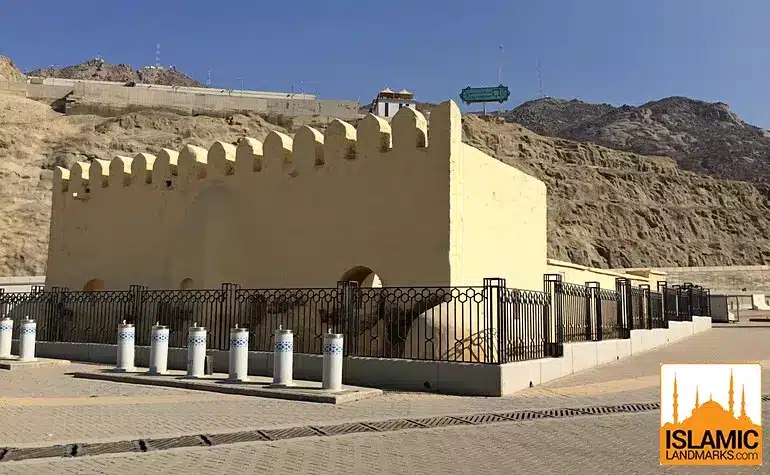Masjid Al Bayah – Pledge Between The Muslims & Ansar
Discover the essence of Masjid Al Bayah, a sacred haven outside Mecca (or Makkah), Saudi Arabia much like Masjid Al Aqsa and Masjid Al-Haram.
Uncover its location, delve into the meaning of ‘Bayah,’ explore its significance in Islamic history, marvel at the architecture, and glimpse into other noteworthy Saudi mosques like Jawatha, Quba, and Saba near Makkah.
What Is Masjid Al Bayah?
The Bay’ah Mosque, alternatively referred to as the Mosque of Aqaba Hill, stands beyond Mecca (or Makkah), in Saudi Arabia and is one of the revered places visited during Hajj.
Constructed and developed in 761 AD upon the directive of Caliph Abu Ja’far al-Mansur, it occupies the historical site of al-Bay’ah.
This location marks the meeting point where the Prophet Muhammad (PBUH) convened with the Ansar (the supporters), leading to the solemn pledge (‘bay’ah’, inspiring the mosque’s name) of Aqaba. It is often visited during Hajj as an homage to the Prophet (PBUH).
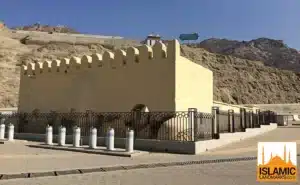
Location of Masjid Al Bayah
Masjid Al Bayah is situated in the vicinity outside Mecca (or Makkah), a city of paramount importance in Islamic tradition and lies about 5km from Madinah visited by pilgrims during Hajj.
Nestled in the spiritual landscape of Saudi Arabia, this mosque near Makkah holds historical significance. The location itself carries a sense of sacredness during Hajj, as it stands as a testament to the pivotal events that unfolded in the early days of Islam in and around Makkah and Madinah.
This strategic placement near Makkah allows visitors to experience a connection to the roots of the faith, offering a tranquil setting for reflection and prayer. The surroundings contribute to the mosque’s aura during Hajj, and Umrah, creating an atmosphere conducive to spiritual contemplation and connection with the rich tapestry of Islamic heritage.
Masjid Al Bayah, with its location outside Mecca (or Makkah) and several kilometres away from Madinah, becomes a beacon for those seeking a deeper understanding of the cultural and historical dimensions of Islam and allows them to pay homage to the Prophet Muhammad (PBUH), especially during Hajj.
What does ‘Bayah’ or ‘Biah’ Mean?
The term ‘Bayah’ or ‘Biah’ holds profound significance in Islamic context. It refers to a solemn pledge or covenant, often symbolising allegiance, loyalty, and commitment.
In the context of Masjid Al Bayah which is near Makkah and quite some distance from Madinah, it echoes the historical event where Prophet Muhammad (PBUH) met with the Ansar (supporters), and they collectively pledged their commitment (‘bayah’) at the site.
This sacred act of ‘Bayah’ signifies a binding agreement and devotion, forming a spiritual contract between individuals and their chosen leaders or figures. It is a symbolic expression of loyalty and obedience to a shared cause, fostering unity and solidarity within the Islamic community during Hajj and Umrah.
Understanding the meaning of ‘Bayah’ adds depth to the historical narrative associated with Masjid Al Bayah especially during Hajj and Umrah, highlighting the profound spiritual and communal aspects inherent in this term within the Islamic tradition.
Significance of Masjid Al Bayah
Masjid Al Bayah bears profound significance as it marks the site where Prophet Muhammad (PBUH) and the Ansar solidified a historic commitment. The pledge between them and the Prophet Muhammad (PBUH) (‘Bayah’) made here wasn’t merely a symbolic act; it laid the foundation for the establishment of a just and unified Islamic society.
This mosque witnessed the early days of Islam near Makkah and Madinah, showcasing the importance of unity and cooperation among the Muslim community. The commitment made at Masjid Al Bayah fostered a sense of brotherhood, emphasising the principles of justice, equality, and mutual support among believers.
Furthermore, Masjid Al Bayah stands as a testament to the wisdom and leadership of Caliph Abu Ja’far al-Mansur, who recognised the significance of this location and commissioned the mosque’s construction in 761 AD.
The enduring legacy of Masjid Al Bayah is not only its architectural and historical value but also the timeless lessons it imparts about the strength derived from communal bonds and the pursuit of a just society within the Islamic framework.
Architecture of Masjid Al Bayah
Masjid Al Bayah’s architectural features are designed to accommodate the needs of worshippers while showcasing unique elements that contribute to its historical charm and significance for Hajj.
The mosque which is near Makkah and a few kilometres from Madinah, consists of an expansive open courtyard, providing a communal space for gatherings and prayers.
Strategically located below the Wadi Mina, approximately 300 metres from the Jamrah al-‘Aqaba, (Stoning of the Devil) and adds a distinctive geographical context to its significance.
The mosque, which lies outside Makkah, is oriented along an east-west axis, and the qibla (the direction of Mecca or Makkah) is set at an angle towards the south-west.
This deliberate orientation emphasises the alignment with the holy city of Mecca (or Makkah), facilitating a sense of spiritual connection for worshippers during Hajj. The qibla wall is a notable architectural feature, topped with parapet-style elements.
These architectural elements may have served a dual purpose – supporting the wooden beams that constituted the roof of the prayer hall or simply serving as decorative embellishments.
The unembellished architecture of the inner facade features minimal adornments, with only a handful of engraved patterns evident. These patterns are concentrated around the upper section of the central arcade, the mihrab, and smaller niches adjacent to the mihrab.
The central nave is distinguished by five arches, with three being semi-circular, one slightly pointed, and the southernmost arch entirely triangular. The varying sizes of the arched portals contribute to the non-uniform yet harmonious aesthetic of the inner facade.
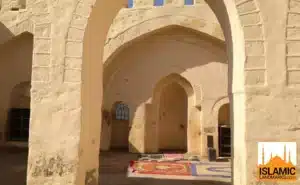
Other Mosques in Saudi Arabia
Saudi Arabia’s rich mosque heritage includes other monumental mosques such as the following:
Jawatha Mosque
Situated approximately 12 km northeast of Hofuf in al-Ahsa, Saudi Arabia, the Jawatha Mosque, built around 629 CE, is believed to have hosted the second Friday congregation prayer after Masjid an-Nabawi.
Masjid Quba
Masjid Quba, where the Prophet Muhammad (PBUH) and Abu Bakr (RAH) sought refuge upon emigrating from Makkah, marks the inception of the Islamic calendar (Hijra) on Monday, 12th Rab’i al-Awwal, 14 years after Prophethood (16th July 622 CE).
It holds the distinction of being the first mosque established by the Prophet Muhammad (PBUH) in Islam outside Makkah and Madinah.
Saba Masjid (Seven mosques)
The Seven Mosques, also known as Saba Masjid, form a historic complex on the western side of Sala’ Mountain in Medina (or Madinah).
Originally seven, the group now comprises six mosques, with significant historical importance as they were located near the trench dug during the Battle of The Trench to defend Medina (or Madinah) during the Prophet’s time. It holds immense significance for Madinah’s history.
Summary – Masjid Al Bayah
As we explore the location, significance, and architectural details of this historically and religiously significant mosque which is near Makkah, Masjid Al Bayah emerges not only as a physical structure but as a timeless symbol of unity, commitment, and the enduring legacy of Islam and the Prophet (PBUH).
It is a favoured spot of Muslims during Hajj who wish to pay homage to this event and the Prophet (PBUH).
Through His Names
New course with
Ustadh Shabbir Hassan




